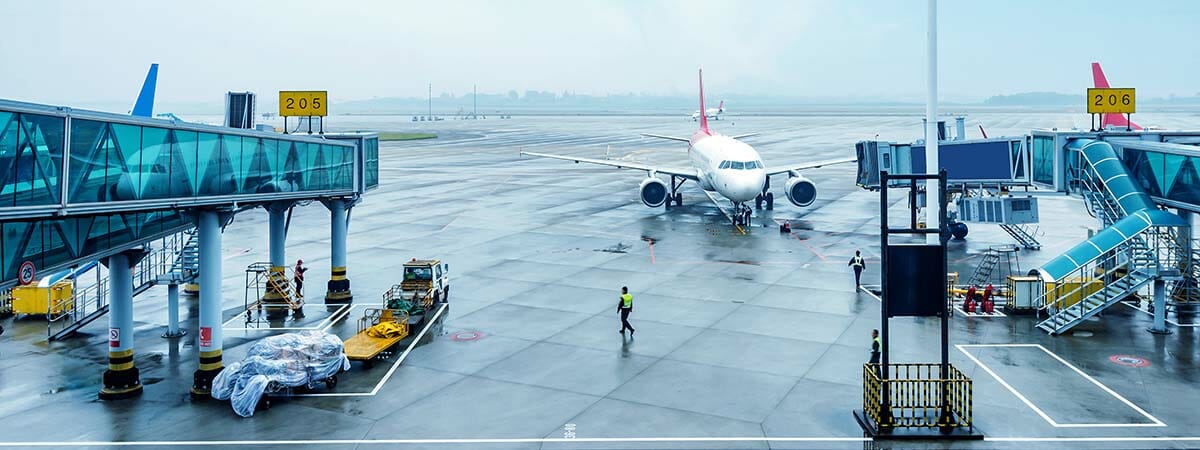One of the most important aspects of airport environments, if not the most relevant, is security. Every process, procedure, action or project that is carried out requires compliance with a series of standards and protocols to guarantee high levels of security.
One of the key elements in this environment is people. The activity in airports involves thousands of people who, amidst all the chaos, are aware of the exceptional nature of the environment in which they work and, as a result, they agree to abide by a series of requirements in terms of both their own training and each of the activities they perform.
Security is an essential aspect of airport environments, requiring a knowledge of and strict respect for existing regulations.
Security levels in airport environments are specifically tailored to the tasks inherent to each job. The conditions involving, for example, the work of a vendor in a store in the shopping area of a terminal have almost nothing to do with those of an aircraft refuelling operator.
Because of this, the need became evident on an international scale years ago to not only properly legislate everything involving security in airport settings, but also to provide specific training to everyone who works in certain sensitive areas or zones.
In this regard, international air safety agencies, as well as the aviation agencies of most countries, have opted to develop specific training plans.
Spain’s National Aviation Safety Agency (AESA) launched an initiative a few years ago that makes it compulsory to have training in operational safety for everyone who is going to engage in any activity in the movement area of Spanish airports. This was initiated in a coordinated manner with the principles expressed in this regard by EASA (European Aviation Safety Agency) and all other European agencies.
The initiative is called AVSAF, short for Aviation Safety, and was adopted at the request of the airport sector. Its goal is to provide individuals who have unescorted access to the movement area of the entire AENA airport network with standardised and quality training on operational security.
One of the most important aspects is that the AVSAF Training Certificate is personal for each worker and is a requirement to carry out any activity that requires entry to or driving in an airport’s movement area.
Although everyone currently working in an airport must have the relevant certificate of aptitude for the Basic Security Awareness Course (AVSEC), starting on 30 May 2022, anyone requiring unescorted access to the movement area will also need to have an AVSAF, or aviation safety, certificate of aptitude.
The AVSAF project consists of several courses, depending on who it is intended for, and has a specific diploma or certificate of aptitude in each case:
- AVSAF pedestrians (AVSAF_P), for unescorted access to the airport movement area.
- AVSAF Drivers (AVSAF_C), for performing tasks that involve driving vehicles and/or equipment in the movement area.
- AVSAF for instructors (AVSAF_I), in order to be an AVSAF instructor.
Both the pedestrian and driver courses can be taught by companies that, like AERTEC, have applied to AESA to become an AVSAF Training Organisation (OFA in Spanish). AESA imposes certain minimum requirements in order to be an OFA.
The team that developed this training project has drawn up, based on the guidelines provided by AESA, the content for the different modules that make up the courses, adapting them to the different training needs.
After taking the corresponding AVSAF course, an exam is administered entirely under AESA’s control using a Moodle based tool, which will correct the exam instantly and provide the result at the end of the test. The OFAs will be responsible for checking whether the applicant is eligible or not. If so, they will issue the certificate of completion for the AVSAF course.
It is logical for some to wonder if all these training courses are really necessary to access the restricted areas of an airport. The reality is that, in view of the current regulatory framework, they are essential:
Regulation (EC) No 216/2008, known as the basic regulation, sets out the Essential Requirements for Aerodromes that are applicable in the European Union. (Annex 5a). Specifically, section 2.1 (l) of Annex 7 of Regulation (EU) 2018/1139 establishes that:
“the aerodrome operator shall ensure that any person permitted unescorted access to the movement area or other operational areas is adequately trained and qualified for such access;”
Regulation (EU) No 139/2014. In section ADR.OR.D.017 and its AMC1 ADR.OR.D.017 (a);(b), this essential requirement is further laid out:
“The aerodrome operator is responsible for ensuring that unescorted personnel working in the movement area and other operational areas of the airport are adequately trained”
“The training programme should cover all personnel operating unescorted on the movement area, and other operational areas of the aerodrome, and which are related to the aerodrome operator, or other organisations which operate or provide services at the aerodrome.”
In short, the AVSAF project will be an indispensable tool for complying with the applicable laws and for providing basic knowledge on operational security to all the personnel involved in airport operations. The aim is, as we said at the beginning, to improve security for everyone.
AERTEC is an OFA (AVSAF Training Organisation) and has already incorporated the AVSAF pedestrian (AVSAF_P) and AVSAF Drivers (AVSAF_C) courses into its training platform. There, companies that wish to do so will be able to access both this and the other courses that are currently available.
The course is taken online through AERTEC’s training platform. Anyone wishing to take the AESA test must have completed the course.



